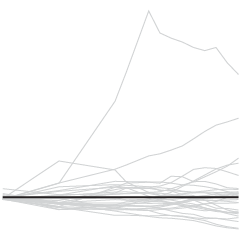 Ever since my hometown Fresno, California was ranked the dumbest city in America (albeit, with a flawed ranking system), the first FlowingPrints series, on the state of education, has taken on new meaning. It became personal, and then it occurred to me that it should be personal for everyone. I think most of us know how important a good education is.
Ever since my hometown Fresno, California was ranked the dumbest city in America (albeit, with a flawed ranking system), the first FlowingPrints series, on the state of education, has taken on new meaning. It became personal, and then it occurred to me that it should be personal for everyone. I think most of us know how important a good education is.
Needless to say, my old high school and middle school now each have a copy of the series. My mom hand-delivered them (thanks, Mom). I’ve also been sending prints to schools, libraries, and education departments across the country near those who have already bought prints for themselves (thanks, all).
But I need more help.
From here on out, until all the prints are gone out of my garage, for every print you buy, I’ll send one to local education. If you simply don’t have any wall space, how about sending the series to a high school near you or your local library? I’ll send another to your local education board.
Get the warm fuzzies, and spread awareness today. For the cost of a few lattes, you’ll be supporting education, your community, and data. Plus, you’ll be getting some beautifully designed prints.





 Ever since my hometown Fresno, California was
Ever since my hometown Fresno, California was 

 Visualize This: The FlowingData Guide to Design, Visualization, and Statistics (2nd Edition)
Visualize This: The FlowingData Guide to Design, Visualization, and Statistics (2nd Edition)










